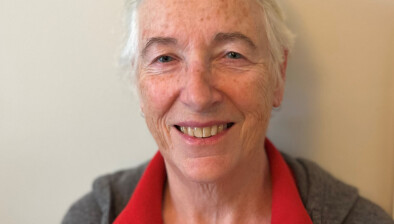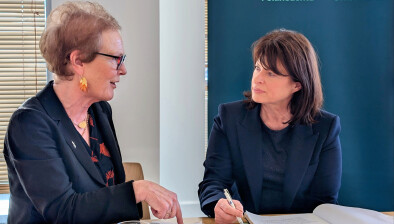Child care law reports highlight challenges of interagency co-operation

Dr Maria Corbett
The Child Law Project has published its latest volume of case reports, with the challenge of interagency co-operation in the care of vulnerable children, especially those with disabilities, emerging as the main theme.
The new volume comprises 54 reports — 43 from the District Court and 11 from the High Court — attended by the project’s reporters over the second half of 2023.
The majority of District Court cases (26 cases) attended concern applications for care and supervision orders. Echoing previous volumes, key themes in these cases include parental mental health, addiction, homelessness and domestic violence.
The absence from the child’s life of one or both parents is a striking feature in many reports. In 11 of the 26 reports, the child’s father was either not known to Tusla, not engaging in or not mentioned during the proceedings, and in four cases the child had been abandoned by their mother.
In six cases, the parent was in prison or had recently left detention and in two others the mother had been in care during her own childhood.
Other cases relate to children already in care, including discussions on the appropriateness of the care placement and arrangements for aftercare and reunification.
Some involve possible child victims of trafficking. In two cases, adults were detained when entering the country as gardaí were not satisfied about their identities and relationship to the children with whom they were travelling. In a third case, the court reiterated earlier directions that no information should be shared about the location of a migrant teenager in care given concerns that the child had been a victim of trafficking.
Much like the previous volume six months ago, several of the reports reveal concern and frustration on the part of the judiciary about failings in the care system.
In one case, the judge directed that unless the matter of a girl’s placement was resolved before the next hearing, Tusla’s chief executive would be required to give evidence to the court explaining why the agency could not meet its obligations to provide the girl with a suitable registered placement. The teenager had been in more than 20 placements and at one point her current placement was due to end in a few days’ time.
In a second case, the judge refused an order sought by Tusla as the young boy in question was without an allocated social worker. The judge instead granted a shorter order and requested an update from Tusla when the case was back in court three weeks later.
In a third case, the judge directed Tusla to prepare a detailed written care plan for a vulnerable teenage girl who had had a large, but unknown, number of emergency placements and was now living at home as a “special emergency stop gap”.
Failings were also seen in the education arena, with concerns raised in six reports that a child in care was not engaged in education or did not have a plan for their education.
In one of these cases, the judge said he was “incandescent with rage” that a child in care was almost 15 and had not had one day of secondary education. The judge threatened to serve a witness summons on the Department of Education. When the case returned to court, a tutor had been identified but the Department was refusing to pay the tutor’s travel expenses. Tusla agreed to cover this payment.
The latest volume also includes a report on proceedings heard in 2021 in which the High Court heavily criticised the HSE for failing to meet the needs of a young girl with disabilities who spent nearly 60 days in a dark room off a hospital A&E department as the HSE could not find her another placement.
During this time, she had not gone outside for fresh air and had had no education or physical activity. For a period, she did not even have a TV or access to Wi-Fi.
Dr Maria Corbett, CEO of the Child Law Project, said: “This case included a stand-off between two State agencies over who was responsible for providing care to a child with a disability.
“The High Court has ruled very clearly that the duty to provide disability services, including an appropriate residential placement, lies with the HSE, not the CFA. The High Court, in line with international human rights law, stated that a child should not be admitted to care solely on the basis of their disability.”
She continued: “This case highlights the need for a culture shift away from departmental and agency silos. Our court reporting shows that a significant proportion of children in care have a disability and/or mental health needs and so the CFA needs to access HSE services for these children. A protocol exists on joint working. However, it is not consistently adhered to or is only applied at the 11th hour.
“This volume includes examples of where the protocol has been breached as well as of where it has been followed and is working well. A more collaborative culture and new procedures are needed to ensure the CFA and HSE work jointly and promptly to plan and meet the needs of vulnerable children with disabilities.”
The volume also contains 10 reports from the wardship list heard by the High Court.
One report covers a High Court ruling on how to address wards of court who were the subject of detention orders, given that the new regime under the Assisted Decision-Making (Capacity) Act did not provide for such orders. The High Court recognised that such orders continue to be permissible under the court’s inherent jurisdiction as there is a gap in the statutory framework.
Dr Carol Coulter, executive director of the Child Law Project, said: “Detention or restriction orders placed on a child or young adult ward of court, such as not allowing them access to a phone, involve a delicate balancing of personal liberties and the State’s duty to safeguard its citizens. Until legislation is enacted on deprivation of liberty safeguards the High Court continues to play a vital role in such matters.
“Four of the wardship cases involve young people detained abroad for several years as no equivalent unit exists in Ireland. One young woman wrote to the judge that she ‘missed her family, friends, Ireland, the atmosphere and craic, sports, camogie and GAA’.
“Surely, it is time to end this practice of detaining young people for protracted periods of time in foreign hospitals by investing in a service of comparable quality in Ireland.”








